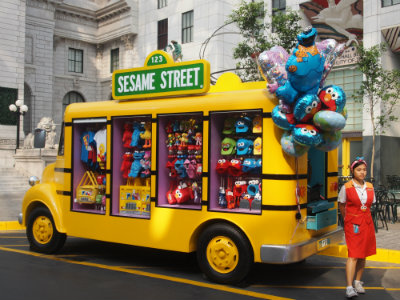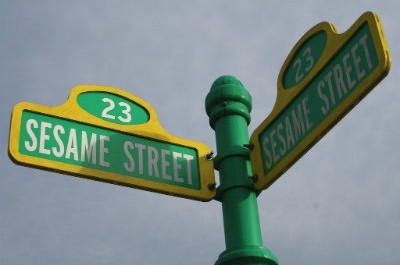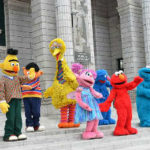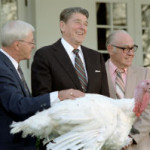Celebrating Sesame Street
The first episode of Sesame Street aired on November 10, 1969. However, the idea for Sesame Street goes back to a dinner party three years earlier. When television producer Joan Ganz Cooney sat at the dinner table with her guests, their attention turned to new ideas for television programs. One of her guests was Lloyd Morrisett, a vice-president of the Carnegie Foundation. The conversation turned to ways to “master the addictive qualities of television and do something good with them,” according to the Archive of American Television. When Cooney and her guests suggested including helping preschool children prepare for school, the wheels began to turn for what would eventually become Sesame Street.
Early Days Of Sesame Street
The main component in the initial efforts of helping preschool-age children across America prepare for school was  the creation of the Children’s Television Workshop (CTW). With a generous grant from the Carnegie Foundation, the Ford Foundation and the U.S. Federal Government, CTW went to work to produce the ideal children’s educational television show.
the creation of the Children’s Television Workshop (CTW). With a generous grant from the Carnegie Foundation, the Ford Foundation and the U.S. Federal Government, CTW went to work to produce the ideal children’s educational television show.
The History Channel explains that Sesame Street “was built around short, often funny segments featuring puppets, animation and live actors,” similar to the format of the popular 1960s variety show “Rowan and Martin’s Laugh-In. The decision to hire Jim Henson, creator of the Jim Henson Muppets helped ratings soar.
One primary difference between Sesame Street and other children’s television shows that proved hugely successful was Cooney’s idea to create the setting for Sesame Street in a fictional New York neighborhood and include “ethnically diverse characters.” This served to attract children from more underprivileged backgrounds. By including the character diversity, creators and producers sent positive social messages, critical from the very beginning, given the first show aired on November 10, 1969, when the country was still reeling over civil rights issues.
More Than Learning A-B-Cs And How To Count
Teaching children to count, learn their A-B-Cs and learn about cultural differences and issues and being accepting of children with disabilities are just some of the ways that the show touched the lives of children. The Archives of Television refers to Sesame Street as “an American Institution” by the end of the 70s.
Jim Henson introduced new characters and many of the famous faces of Hollywood showed up on Sesame Street to visit Miss Piggy, Kermit the Frog, Bert, Ernie, Big Bird, Oscar the Grouch and Cookie Monster, as children sang along to the ever-popular theme song “Can you tell me how to get/How to get to Sesame Street?”
Worldwide Acclaim
The show spread to other countries and in spite of some criticism that Sesame Street contributed to short attention  spans in children, popularity of Sesame Street continued. The federal government withdrew support in the 1980s. However, the show continued to reach millions of children every week. New characters and new topics became part of the Sesame Street neighborhood.
spans in children, popularity of Sesame Street continued. The federal government withdrew support in the 1980s. However, the show continued to reach millions of children every week. New characters and new topics became part of the Sesame Street neighborhood.
The show had to adapt to changes in addition to the new arrival or departure of some Sesame Street characters. Sadly, on May 17, 1990, the New York Times announced that Jim Henson succumbed to pneumonia at just 53 years old. His son, John, 48, the voice of the ogre “Sweetums” followed his father to an early death. The younger Henson died of a heart attack in early 2014.
Sesame Street delights children around the world, helping young children learn about life experiences and other cultures as well as how to count and learn the alphabet. Children and their families can keep up on all the latest Sesame Street happenings at Muppet Central.







